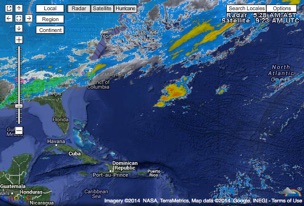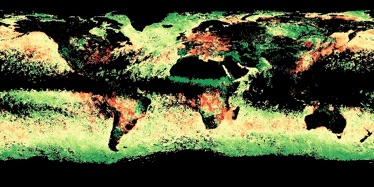“WeatherTalk” is no longer a conversation of banalities: today’s forecast the first info I seek at sunrise. The chickens appear to know how the day’s conditions will unfold, as do wild birds dependent on cached food in foul weather. Atmospheric movement influences global as well as local weather. And air quality: The strong smell of smoke drifting overhead as if wood burning in our fireplace. Shocking to feel the effects in my eyes, lungs from such a great distance on the west coast “( Note 1). Hope Sandrow, September 15 2020
“Earth’s orbit around the sun and its rotation on a tilted axis causes some parts of Earth to receive more solar radiation than others. This uneven heating produces global circulation patterns. ... The local weather conditions that we experience at the Earth's surface are related to these air masses and fronts. However the environment far above us impacts their movement. High in the atmosphere, narrow bands of strong wind, such as the jet streams, steer weather systems and transfer heat and moisture around the globe.“
National Oceanic Atmospheric Administration, Feb 14, 2011
Climatic conditions impact food production and availability: especially where there is no food warehousing on Long Island where six million reside. Why local climatic conditions are of global concern (below, MISR). Including clean air and water: rain in California measured ten times radioactivity after Fukushiima Nuclear Disaster. A coal-ash spill in North Carolina is a potential hazard here if absorbed into the jet stream. Earth’s atmosphere naturally contains ozone in small amounts but its toxic at ground level “created by chemical reactions between air pollutants from vehicle exhaust, gasoline vapors, and other emissions”. Also aerosol particles that “influence air quality and public health, and they can influence climate by reflecting or absorbing sunlight and by changing where and when clouds form. Aerosols include sea salt, dust, and volcanic ash, as well as soot, sulfates, and other particles produced by people burning fossil fuels.”
These airborne particles affect weather conditions on the ground and elsewhere dispersed by jet streams. (right, interact with maps). The resulting amount of aerosol particles (right) corresponds to vapor condensation that effects the transmission of radio waves such as those that compose the world wide web of information technology.
Note 1: The Guardian, “Smoke from west coast wildfires has drifted to New York and Washington DC. Unprecedented fires have burned some 4.5m acres and smoke has made west coast air quality among the worst in the world”.








